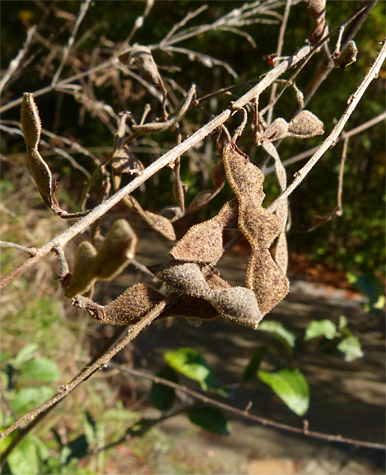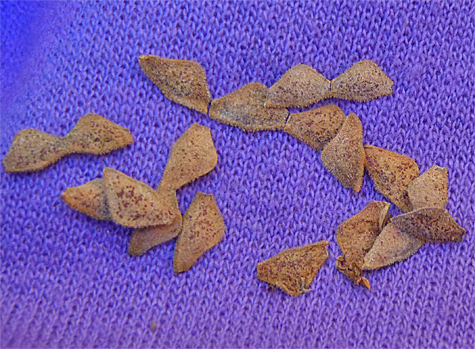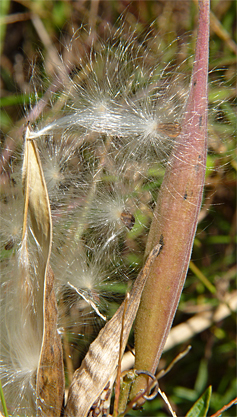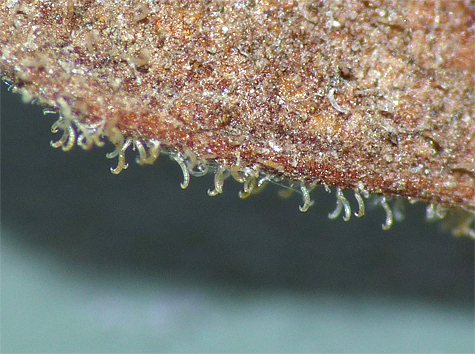Showy Tick Trefoil (Desmodium canadense) is native to North America. It’s a prairie plant, a legume, and reaches a height of over six feet.
From it’s name you may have inferred that it is a pretty (showy) plant and has three-lobed leaves (trefoil). The flowers are indeed attractive and the leaves have three leaflets, but where does the tick part come in. If you brush against the plant in the fall or winter you’ll probably carry some of the plant’s seeds along with you, they stick to you like a tick sticks to you.




Some plants disperse their seeds through the wind. Cottonwoods, willows, and milkweeds are just a few of the plants whose seeds are carried by the wind to germinate far from the mother plant.
Other plants conceal their seeds within a tasty, juicy fruit. Birds and mammals that eat the fruit carry the seeds with them and disperse them in their droppings or scat.
Some seeds simply drop to the ground and germinate beneath the mother plant.
Many plants use the stick-to method. The surface of the seeds are covered with, often, tiny hooks which, when rubbed against by an animal, or naturalist, attaches itself to the fur or clothing for a free ride to far off lands. If the seed happens to be chewed or rubbed off in a suitable location for gemination it will have done its job and a new plant will emerge from the soil the following spring or summer. This is how Showy Tick Trefoil gets to wherever it is that you happen to see it growing.

This hook-on strategy is a good one for a prairie plant. There are, or were when this plant evolved, millions of buffalo and other mammals wandering the prairies. What better way to get your seed from one place to another than to be growing in the path of a migrating herd of American Bison with all of that thick, brown fur to cling to!